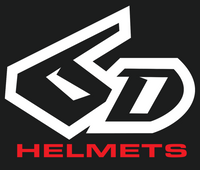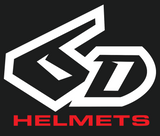When Football and Action Sports Intersect
The contest was part of a $60 million endeavor by the NFL, GE, Under Armor, and NIST (the U.S. Commerce Department’s National Institute of Standards and Technology), with the objective of improving the safety of participants in football and other contact-related activities, including military and law enforcement. The idea was to support entities in developing a superior energy-management device, system, or material. We originally entered with our testing partner, Dynamic Research, Inc. (DRI), back in 2016, and we were one of five entries selected (out of 125) to receive grant funding to further develop our solution.
DRI brought a lot to the table. Specifically, they carried out Finite Element Method analysis (FEM) using software and equipment that 6D doesn’t have. They were really an outstanding partner, assisting with analysis of the materials and testing different designs in the computer without having to make a physical part. The general process comprised 6D coming up with a design and a strategy, and DRI then testing it in the computer through FEM. Once we got to what we felt was a good point, we would physically make that part or material and test it in the laboratory to see how close our data was. We were generally within about 5 percent, so that FEM process was huge for us.
We had one year of somewhat guided development, with some resources provided by the program. Over the course of that year, our solution was measured against those of the other four selected entries. We were graded as to how our material developed and what it actually accomplished from a performance perspective. In the end, we won the Grand Prize, which was a $500,000 award that was split between Dynamic Research and us. That money will go toward further development and research in the area of Omni-Directional Suspension technology.
When 6D first got involved with the NFL on these programs, the goal was to improve our knowledge of the materials that we were using in helmets. We’re very interested in the multi-impact world of football and hockey because today’s motorcycle and bicycle helmets are single-impact, “one and done” devices. If we can turn these helmets into something that will be more durable over the long run and still do the job, that will be a good thing, so material knowledge and testing capability are really high on our list of priorities.
What I don’t think we were expecting was to make gains with how our existing technology could be manipulated in design and function in order to improve its results. As it turns out, we made a lot of progress in that area, bettering the design of ODS to work more efficiently in shear. The new ATB-1T Evo trail mountain bike helmet already uses an improved version of ODS that reflects what we learned through the NFL Head Health Challenge.
Probably because our company is still quite small, people often ask if I was surprised to win the NFL Head Health Challenge Grand Prize, but at the risk of sounding a little arrogant, I honestly wasn’t. Obviously, winning was a thrill, but I’ve always had very high confidence in the ODS method of separating the two layers of the helmet. It’s a very good design that works, so while I didn’t necessarily predict that we would be selected for the Grand Prize, I thought we would do well.
Nonetheless, winning the contest definitely brings a certain amount of satisfaction and even pride, and not just for our company; 6D being selected as the Grand Prize winner in the NFL Head Health Challenge shows that the powersports and cycling communities, both of which we’re pleased to represent, can make meaningful contributions in areas that improve the wellbeing of the world at large. That’s definitely something in which we can all take pride as we watch one of the most popular sporting events in the world this weekend.






Leave a comment